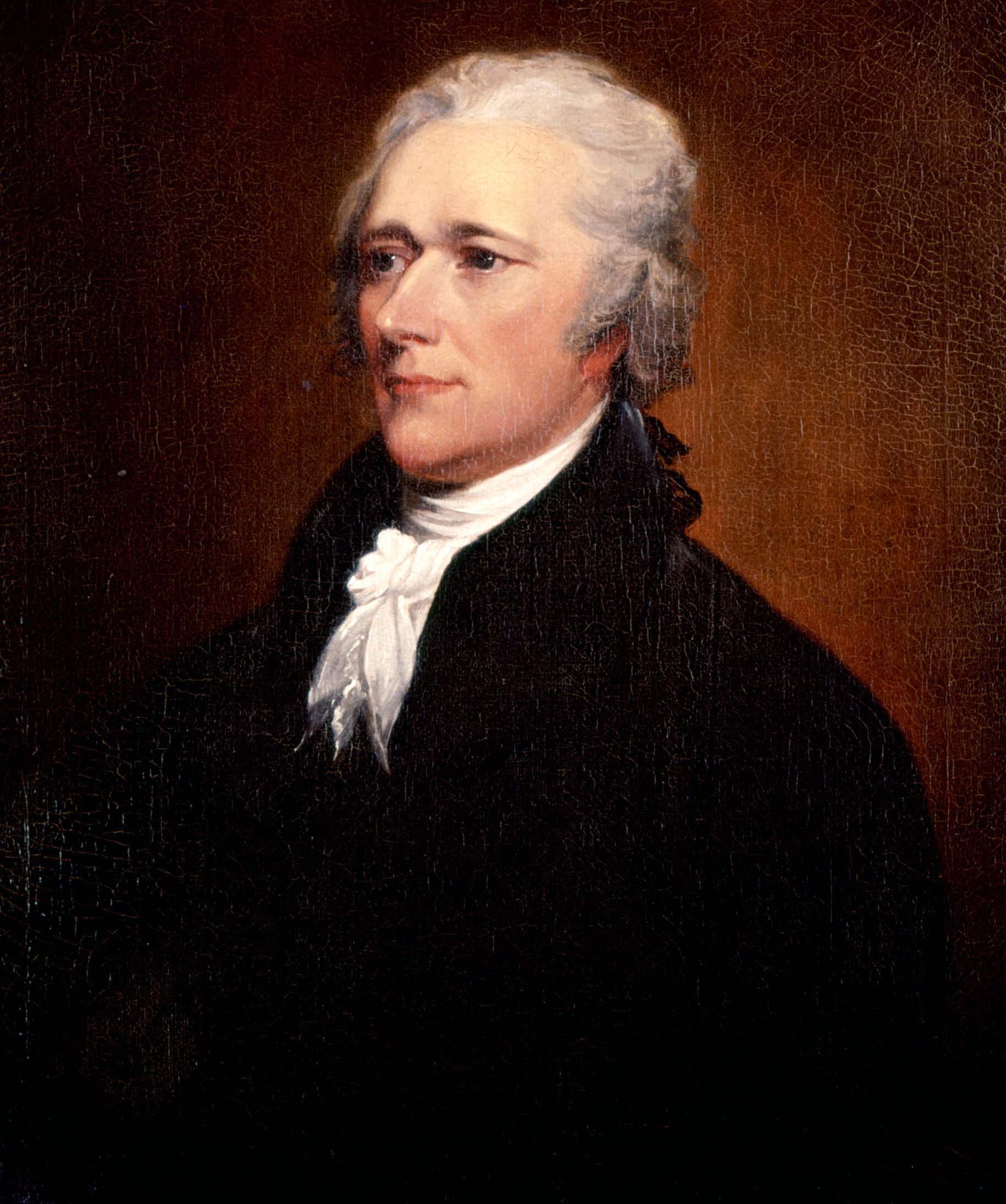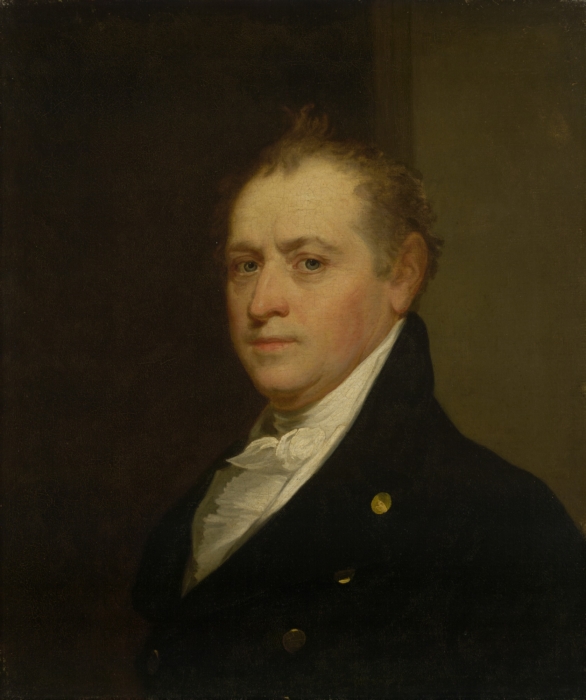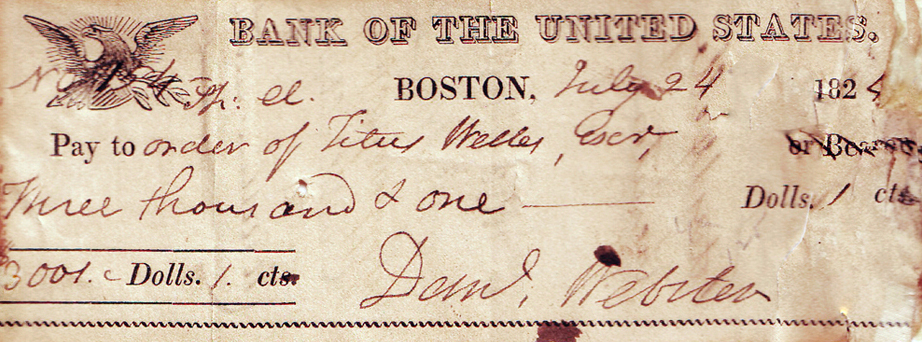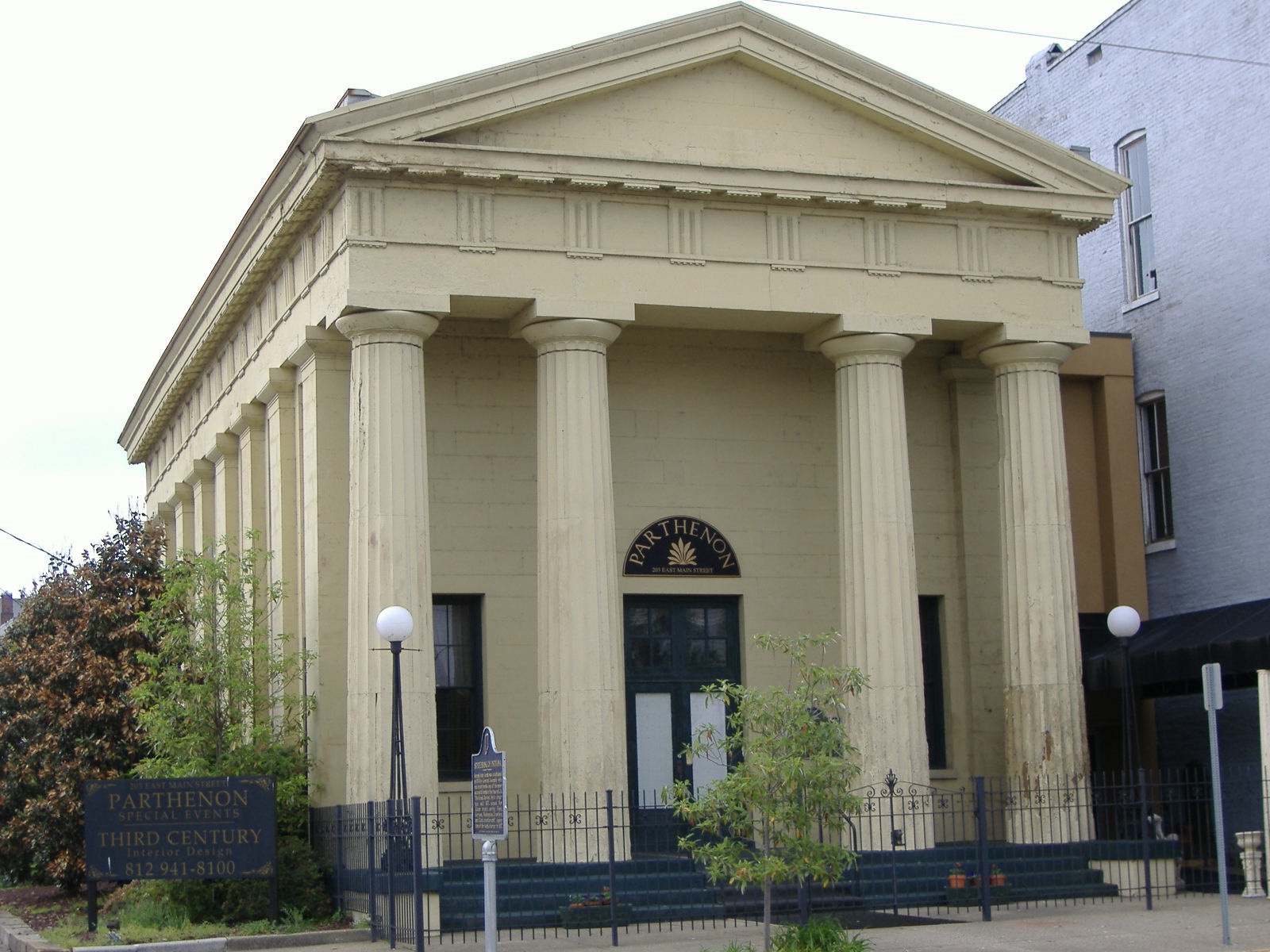|
Hugh McCulloch
Hugh McCulloch (December 7, 1808 – May 24, 1895) was an American financier who played a central role in financing the American Civil War. He served two non-consecutive terms as U.S. Treasury Secretary under three presidents. He was originally opposed to the creation of a system of national banks, but his reputation as head of the Bank of Indiana 1857 to 1863 persuaded the Treasury to bring him in to supervise the new system as Comptroller of the Currency 1863–65. As Secretary of the Treasury 1865–69 he reduced and funded the gigantic Civil War debt of the union, and reestablished the federal taxation system across the former Confederate States of America. He tried but failed to make a rapid return to the gold standard. He was the last surviving member of the Lincoln Cabinet. Biography Early life Born in Kennebunk, Maine, he was the son of Hugh McCulloch Sr., one of the largest shipbuilders in New England, and Abial Perkins. He was educated at Thornton Academy in Saco, ... [...More Info...] [...Related Items...] OR: [Wikipedia] [Google] [Baidu] |
United States Secretary Of The Treasury
The United States secretary of the treasury is the head of the United States Department of the Treasury, and is the chief financial officer of the federal government of the United States. The secretary of the treasury serves as the principal advisor to the president of the United States on all matters pertaining to economic and fiscal policy. The secretary is a statutory member of the Cabinet of the United States, and is fifth in the United States presidential line of succession, presidential line of succession. Under the Appointments Clause of the United States Constitution, the officeholder is nominated by the president of the United States, and, following a confirmation hearing before the United States Senate Committee on Finance, Senate Committee on Finance, is confirmed by the United States Senate. The United States Secretary of State, secretary of state, the secretary of the treasury, the United States Secretary of Defense, secretary of defense, and the United States Att ... [...More Info...] [...Related Items...] OR: [Wikipedia] [Google] [Baidu] |
Presidency Of Abraham Lincoln
The presidency of Abraham Lincoln began on March 4, 1861, when Abraham Lincoln Abraham Lincoln ( ; February 12, 1809 – April 15, 1865) was an American lawyer, politician, and statesman who served as the 16th president of the United States from 1861 until his assassination in 1865. Lincoln led the nation thro ... was United States presidential inauguration, inaugurated as the List of presidents of the United States, 16th president of the United States, and ended upon his Assassination of Abraham Lincoln, assassination and death on April 15, 1865, days into his second term. Abraham Lincoln, Lincoln was the first member of the recently established Republican Party (United States), Republican Party elected to the presidency. Lincoln successfully presided over the Union (American Civil War), Union victory in the American Civil War, which dominated his presidency and resulted in the end of slavery. Lincoln took office following the 1860 United States presidential ele ... [...More Info...] [...Related Items...] OR: [Wikipedia] [Google] [Baidu] |
President Of The United States
The president of the United States (POTUS) is the head of state and head of government of the United States of America. The president directs the executive branch of the federal government and is the commander-in-chief of the United States Armed Forces. The power of the presidency has grown substantially since the first president, George Washington, took office in 1789. While presidential power has ebbed and flowed over time, the presidency has played an increasingly strong role in American political life since the beginning of the 20th century, with a notable expansion during the presidency of Franklin D. Roosevelt. In contemporary times, the president is also looked upon as one of the world's most powerful political figures as the leader of the only remaining global superpower. As the leader of the nation with the largest economy by nominal GDP, the president possesses significant domestic and international hard and soft power. Article II of the Constitution establ ... [...More Info...] [...Related Items...] OR: [Wikipedia] [Google] [Baidu] |
Secretary Of The Treasury
The United States secretary of the treasury is the head of the United States Department of the Treasury, and is the chief financial officer of the federal government of the United States. The secretary of the treasury serves as the principal advisor to the president of the United States on all matters pertaining to economic and fiscal policy. The secretary is a statutory member of the Cabinet of the United States, and is fifth in the presidential line of succession. Under the Appointments Clause of the United States Constitution, the officeholder is nominated by the president of the United States, and, following a confirmation hearing before the Senate Committee on Finance, is confirmed by the United States Senate. The secretary of state, the secretary of the treasury, the secretary of defense, and the attorney general are generally regarded as the four most important Cabinet officials, due to the size and importance of their respective departments. The current secretary ... [...More Info...] [...Related Items...] OR: [Wikipedia] [Google] [Baidu] |
Eastern United States
The Eastern United States, commonly referred to as the American East, Eastern America, or simply the East, is the region of the United States to the east of the Mississippi River. In some cases the term may refer to a smaller area or the East Coast plus Illinois, Wisconsin, Indiana, Mississippi, and their border states. In 2011, the 26 states east of the Mississippi (in addition to Washington, D.C. but not including the small portions of Louisiana and Minnesota east of the river) had an estimated population of 179,948,346 or 58.28% of the total U.S. population of 331,745,358 (excluding Puerto Rico). New England New England is a region of the United States located in the northeastern corner of the country, bounded by the Atlantic Ocean, Canada and the state of New York, consisting of the modern states of Maine, New Hampshire, Vermont, Massachusetts, Rhode Island, and Connecticut. In one of the earliest English settlements in the New World, English Pilgrims from Europe first ... [...More Info...] [...Related Items...] OR: [Wikipedia] [Google] [Baidu] |
Second Bank Of The United States
The Second Bank of the United States was the second federally authorized Hamiltonian national bank in the United States. Located in Philadelphia, Pennsylvania, the bank was chartered from February 1816 to January 1836.. The Bank's formal name, according to section 9 of its charter as passed by Congress, was "The President Directors and Company of the Bank of the United States". While other banks in the US were chartered by and only allowed to have branches in a single state, it was authorized to have branches in multiple states and lend money to the US government. A private corporation with public duties, the Bank handled all fiscal transactions for the U.S. Government, and was accountable to Congress and the U.S. Treasury. Twenty percent of its capital was owned by the federal government, the Bank's single largest stockholder.. Four thousand private investors held 80 percent of the Bank's capital, including three thousand Europeans. The bulk of the stocks were held by a few hundr ... [...More Info...] [...Related Items...] OR: [Wikipedia] [Google] [Baidu] |
National Banking Act
The National Banking Acts of 1863 and 1864 were two United States federal banking acts that established a system of National bank#United States, national banks, and created the United States National Banking System. They encouraged development of a national currency backed by bank holdings of U.S. Treasury securities and established the Office of the Comptroller of the Currency as part of the United States Department of the Treasury and a system of nationally chartered banks. The Act shaped today's national banking system and its support of a uniform U.S. banking policy. Background At the end of the Second Bank of the United States in 1836, the control of banking regimes devolved mostly to the states. Different states adopted policies including a total ban on banking (as in Wisconsin), a single state-chartered bank (as in Indiana and Illinois), limited chartering of banks (as in Ohio), and free entry (as in New York). While the relative success of New York's "free banking" laws led ... [...More Info...] [...Related Items...] OR: [Wikipedia] [Google] [Baidu] |
Comptroller Of The Currency
The Office of the Comptroller of the Currency (OCC) is an independent bureau within the United States Department of the Treasury that was established by the National Currency Act of 1863 and serves to charter, bank regulation in the United States, regulate, and supervise all national banks and Cooperative banking, thrift institutions and the federally licensed branches and agencies of foreign banks in the United States. The acting Comptroller of the Currency is Michael J. Hsu, who took office on May 10, 2021. Duties and functions Headquartered in Washington, D.C., it has four district offices located in New York City, Chicago, Dallas and Denver. It has an additional 92 operating locations throughout the United States. It is an independent Government agency, bureau of the United States Department of the Treasury and is headed by the Comptroller of the Currency, appointed to a five-year term by the President with the consent of the Senate. The OCC pursues a number of main objectiv ... [...More Info...] [...Related Items...] OR: [Wikipedia] [Google] [Baidu] |
Salmon P
Salmon () is the common name for several commercially important species of euryhaline ray-finned fish from the family Salmonidae, which are native to tributaries of the North Atlantic (genus ''Salmo'') and North Pacific (genus '' Oncorhynchus'') basin. Other closely related fish in the same family include trout, char, grayling, whitefish, lenok and taimen. Salmon are typically anadromous: they hatch in the gravel beds of shallow fresh water streams, migrate to the ocean as adults and live like sea fish, then return to fresh water to reproduce. However, populations of several species are restricted to fresh water throughout their lives. Folklore has it that the fish return to the exact spot where they hatched to spawn, and tracking studies have shown this to be mostly true. A portion of a returning salmon run may stray and spawn in different freshwater systems; the percent of straying depends on the species of salmon. Homing behavior has been shown to depend on ... [...More Info...] [...Related Items...] OR: [Wikipedia] [Google] [Baidu] |
Bank Of Indiana
The state Bank of Indiana was a government chartered banking institution established in 1833 in response to the state's shortage of capital caused by the closure of the Second Bank of the United States by the administration of President Andrew Jackson. The bank operated for twenty-six years and allowed the state to finance its internal improvements, stabilized the state's currency problems, and encouraged greater private economic growth. The bank closed in 1859. The profits were then split between the shareholders, allowing depositors to exchange their bank notes for federal notes, and the bank's buildings and infrastructure were sold and reincorporated as the privately owned Second Bank of Indiana. Background The Indiana Territorial legislature had charted two banks in 1813. With no other established banks operating in Indiana, they were the first attempt by the government to bring banking and a standard currency to the young territory. The banks were granted twenty-year charter ... [...More Info...] [...Related Items...] OR: [Wikipedia] [Google] [Baidu] |
Fort Wayne, Indiana
Fort Wayne is a city in and the county seat of Allen County, Indiana, United States. Located in northeastern Indiana, the city is west of the Ohio border and south of the Michigan border. The city's population was 263,886 as of the 2020 Census, making it the List of cities in Indiana, second-most populous city in Indiana after Indianapolis, and the 76th-most populous city in the United States. It is the principal city of the Fort Wayne metropolitan area, consisting of Allen and Whitley County, Indiana, Whitley counties which had an estimated population of 423,038 as of 2021. Fort Wayne is the cultural and economic center of northeastern Indiana. In addition to the two core counties, the combined statistical area (CSA) includes Adams County, Indiana, Adams, DeKalb County, Indiana, DeKalb, Huntington County, Indiana, Huntington, Noble County, Indiana, Noble, Steuben County, Indiana, Steuben, and Wells County, Indiana, Wells counties, with an estimated population of 649,105 in 202 ... [...More Info...] [...Related Items...] OR: [Wikipedia] [Google] [Baidu] |
.jpg)









